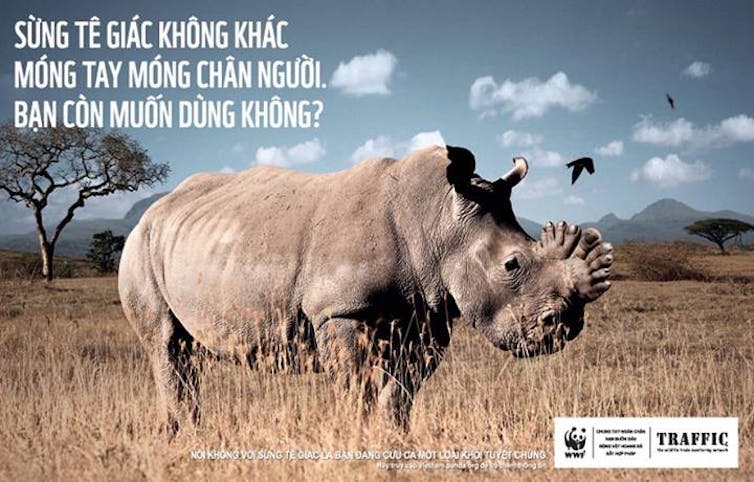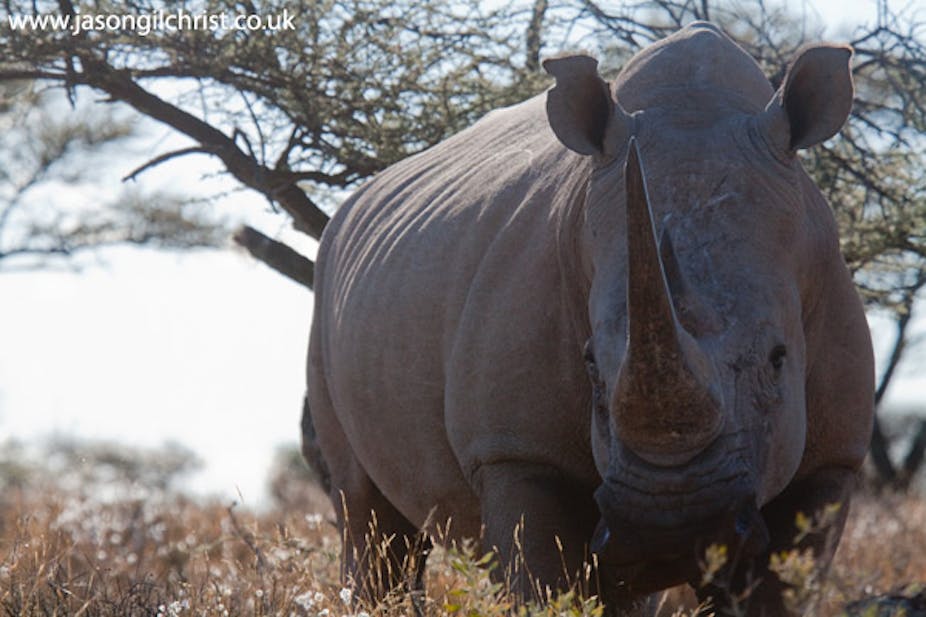The next week or so could determine the future of the rhino. Delegates from 183 nations are heading to Johannesburg, South Africa, for the CITES conference (CoP17) on the international wildlife trade.
It’s fitting that the conference should take place in a South Africa that already finds itself at the centre of the latest big rhino conservation struggle. Earlier this year, private game ranchers successfully overturned a government moratorium on the domestic trade in rhino horn. International trade has been banned since 1977 and the domestic trade is banned even in those Asian countries which drive demand. South Africa has become an outlier.

Faced with pressure from the game ranching industry, environment minister, Edna Molewa, has suggested that South Africa will be pro-trade in elephant ivory and rhino horn.
Swaziland, the small country sandwiched between South Africa and Mozambique, complicated matters by tabling a resolution to the conference that calls for a limited sale of existing rhino horn stocks to East Asian markets. It wants to reinvest the funds into conserving its existing rhinos. However, this move would set a dangerous precedent, and South African game ranchers will be watching (and supporting) the resolution for other reasons.
A battle is raging not simply between ranchers and activists, but also within the conservation community. After all, poaching is still increasing despite the international trade ban, and extra conservation actions, including de-horning rhinos and spy-cams embedded in their horns, have yet to produce demonstrable benefits. With populations unable to sustain any further losses, some conservationists have become desperate enough to promote legal trade as the rhino’s last chance.

The argument is simple: legalise the trade, and the value of rhino horn will decrease until poachers no longer consider it worth the risk. At present, a kilogram of rhino horn is worth US$65,000 on the black market, more than gold, diamonds or cocaine.
But, while making rhino horn less valuable may sound like a good idea, the implications of a legal international trade are not straightforward. Legalisation may increase demand, as it would become “acceptable” and marketable. The difficulty of differentiating between legally sourced and poached rhino horn means mean some rhino would still be killed illegally.
Legalising the trade also further encourages game ranchers to farm rhino (they already do): like cattle or sheep. A serious question needs to be asked: do we want rhino to become a domesticated farm animal rather than a wild animal?

The rhino trade’s moral impact on people is a key issue, but often gets overlooked. Demand is principally from East Asia, with Vietnam and China currently the main markets. Rhino horn is mostly ingested in the misguided belief that it has unique medicinal properties, and legalising trade would encourage false marketing of health benefits.
In many cases consumers are vulnerable people, who are desperate and seek hope, or an aspirational (and wealthy) but misguided middle-class. The latter are motivated by the prestige of owning, gifting, or consuming a rare commodity with “mystique”.
Medical tourism to Africa
The motive for the majority of South African rhino ranchers is obvious: if the trade is legalised they can make money. Some have even speculated on this by buying and farming rhino in the hope they’ll get rich once the ban is lifted.
But for now, how do they make money from rhino? Ecotourism and trophy hunting will bring in some revenue, but this is dwarfed by the potential income from rhino horn. Owners also have the expensive, time-consuming and dangerous task of protecting their rhino from poachers.
For private rhino owners, a legal international trade would be ideal. However, despite growing pressure, this is unlikely to happen as legalisation requires two-thirds of CITES parties (120 or so countries) to vote in favour. For now, South Africa must be content with the recently opened domestic trade.
So why would anyone in South Africa want to buy rhino horn domestically, when the primary consumer market is in Asia and illegal? The answer, and the reason why ranchers are keen to keep the market open, is that this trade is an opportunity to bring wealthy Asian consumers to South Africa. The medical tourism fallacy – where people from other parts of the world come to South Africa to take powdered horn for “health reasons” – would continue to promote the falsehood that rhino horn cures the incurable. This helps neither people nor rhino.
Beyond CITES
CITES legislation is insufficient in itself, and effective enforcement is vital. The Vietnamese prime minister, under the threat of potential international trade sanctions, recently called for a crackdown on the illegal wildlife trade.

In the long-term, however, we need to reduce demand. This means tackling ignorance about the illegal trade, and ensuring people are aware of the perilous situation rhinos are in. A better appreciation of the natural world, and its importance to our ecosystem and welfare, means more will take responsibility to protect it.
Promoting trade in an endangered species goes in the opposite direction, and it is very difficult to reverse. Note to the conference: the rhino horn trade is a big risk – if it goes wrong we hasten rhino species towards extinction.


